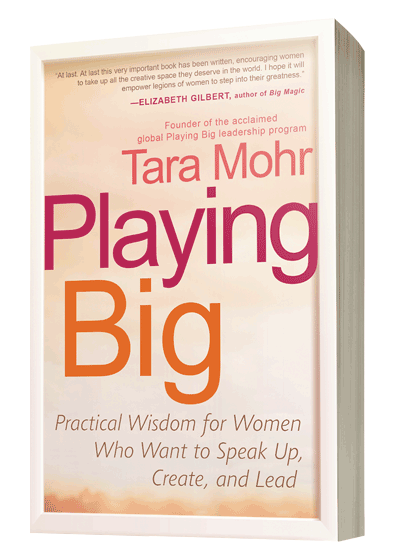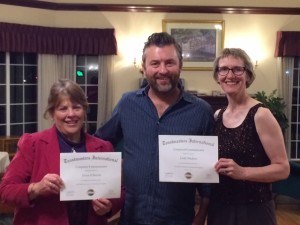
When I read this, I was shocked…
If you’ve ever felt your opinion wasn’t given its due, you don’t want to miss this!
I joined Toastmasters back in October. I’m learning a good deal about speaking habits and how they assist or undermine one’s communication. Things like “verbal pauses”: “um,” “ah,” “so,” “and,” “but,” “and stuff,” and so forth, are simply unnecessary filler. I’ve become much more aware of these in my own speech and that of others.
In a completely different arena of my life, a friend recommended the book Playing Big: Practical Wisdom for Women Who Want to Speak Up, Create, and Lead, by Tara Mohr. As so often happens with the Universe and its serendipity, Tara offers some very helpful information about women and their communication habits in Chapter 8, entitled “Communicating with Power.” It’s a treasure chest of information about undermining speech habits!
What I’d most like is for you to get the book and read the entire chapter (and the rest of the book!), but I’m going to give you a quick and dirty summation. Women learn, both from other women and from the real life responses they receive, to use certain communication devices in order to to seem more likeable. Mohr says women and other “non-dominant population groups” can be perceived as either clever or likeable, but not both—while the dominant group (white men in most environments), can be perceived as both likeable and clever. Fascinating.
Here are some of the habits that do not help us in our endeavor to sound credible: (from her chart on page 187)
Undermining Speech Habits:
- Hedges: “Just,” “Actually,” “Kind of,” “Almost”
- Apologies: “Sorry, but…” “Just a minute,” “A little bit”
- Qualifying Phrases: “I’m no expert, but…” “I know you all have been thinking about this longer than I have…” “I could be wrong, but…” “I’m just thinking off the top of my head…” “Does that make sense?”
- Undermining Structures: Uptalk (ending sentence with a vocal rise, like a question) and singsongy tone, Clause after clause—no “periods” in speech, Substituting a question for a statement
These are all well explained with lots of obvious examples in the book: I do hope you’ll find a copy and read it!
Regarding changing these habits: Mohr recommends:
Work on one at a time, and find a buddy and work on it together.
(it’s often harder to hear our own habits. If you belong to Toastmasters, ask your evaluator to listen for whatever you are working on specifically). The other thing she says about changing these habits, is to start by changing them in your writing (emails, etc.) Unlike speaking, writing gives you time to go back and edit. Perfect way to begin!
Coach’s Challenge:
Take this list of undermining speech habits with you when you have coffee with a friend this week. Ask your friend to point out when you use any of them. (You can do it for her as well if she’s game). Awareness is the first step. Once you have a sense of which of these 4 categories you use most, you can decide where to start making changes. Patience. Slow but sure. It’s taken you many years to acquire the habits you have, so… be patient. One habit at a time!
Leave me a comment: tell me what you’ve noticed about these habits in those around you (or yourself.)



